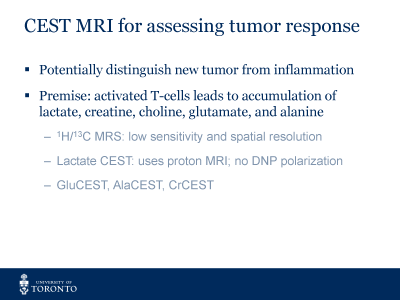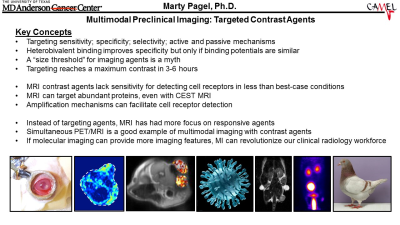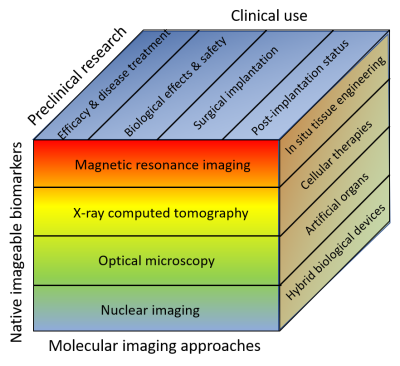Weekend Course
Multimodal Preclinical Imaging
ISMRM & SMRT Annual Meeting • 15-20 May 2021

| Concurrent 3 | 13:00 - 13:45 | Moderators: Christoffer Laustsen & Harish Poptani |
| Multimodal Imaging
Mangala Srinivas
This is a short introduction to multimodal imaging, covering the combination of MRI with other modalities, such as PET, SPECT and/or fluorescence. We will focus on cell tracking applications in a preclinical setting.
|
||
 |
Imaging & Immune Cell Therapy in Cancer
Hai-Ling Cheng
Immune cell therapy is an important approach in the broader repertoire of cancer immunotherapy, a new treatment that uses the body’s immune system to fight cancer in a more personalized and effective manner. Injecting immune cells such as chimeric antigen receptor T cells has shown prolonged survival. However, in-vivo cell distribution and survival are often unknown and may underlie why immunotherapy sometimes fails. We will review current methods for tracking immune cells, their limitations, and a potentially larger role for MRI. We will also briefly discuss imaging assessment of tumor response to correctly identify pseudoprogression, an immunotherapy-specific phenotype.
|
|
 |
Targeted Contrast Agents
Mark Pagel
This presentation will focus on targeted contrast agents for molecular imaging with MRI. Key concepts include |
|
| Imaging Tissue Microstructure
Sungheon Gene Kim
Diffusion MRI is a unique imaging modality suitable for probing tissue microstructure. Unlocking the full potential of diffusion MRI for microstructural imaging requires an adequate diffusion encoding method in terms of diffusion time and gradient strength. dMRI Diffusivity is typically interpreted as a rough measure of the cell density and extracellular water fraction. However, diffusivity and other commonly used dMRI metrics remain non-specific markers, because a diffusion measurement at a fixed diffusion time is affected by multiple factors. The complex microstructural features of tumors and the brain can be probed by adequate sampling of the multi-dimensional space of diffusion encoding.
|
||
 |
Imaging in Regenerative Medicine
Erik Shapiro
This educational lecture will provide a multimodal view of imaging in regenerative medicine. Indeed, the vastness of regenerative medicine requires a complete toolbelt to properly survey the completeness of research and development topics, and clinical methodologies for following treatments. This lecture will survey the uses of multimodal imaging in regenerative medicine, focusing on the benefits of individual imaging methodologies for probing specific research and development questions, and will provide my opinion on how these various imaging technologies might be used clinically.
|
|
| Physiological & Metabolic Imaging
Kristine Glunde
Multimodality molecular imaging applies imaging modalities beyond visualizing anatomy and morphology to include the ability of imaging disease-specific biomolecules and pathways in cancer, cardiovascular disease, and inflammation, among others. Imaging modalities used in physiological and metabolic imaging are computed tomography (CT), magnetic resonance imaging (MRI), magnetic resonance spectroscopic imaging (MRSI), optical imaging, positron emission tomography (PET), single-photon-emission computerized tomography (SPECT), and ultrasound (US).
|
||
| Artificial Intelligence & Machine Learning Methods in Preclinical Imaging
Simon Walker-Samuel
|
The International Society for Magnetic Resonance in Medicine is accredited by the Accreditation Council for Continuing Medical Education to provide continuing medical education for physicians.